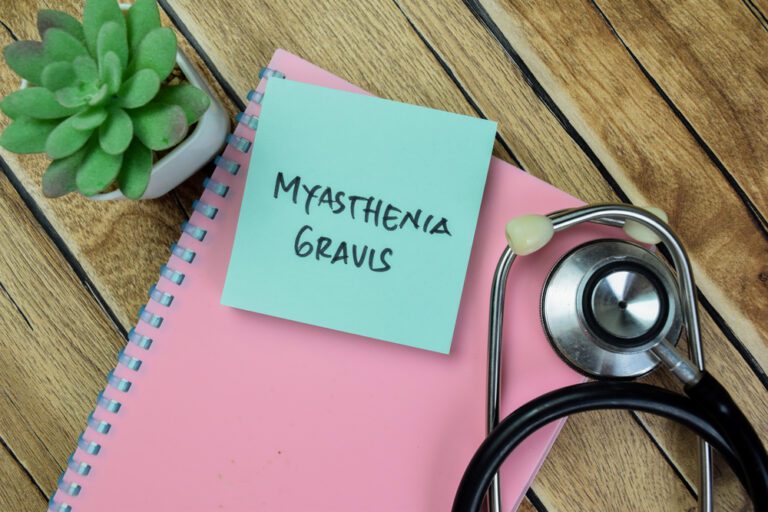Osteoporosis affects millions of Americans, gradually weakening bones and increasing the risk of fractures from even minor falls or sudden movements.
While the condition is particularly common among older adults, especially postmenopausal women, it can affect anyone. Understanding the available treatment options is essential for managing this condition effectively and maintaining quality of life.
What Is Osteoporosis?
Osteoporosis is a progressive bone disease characterized by decreased bone density and deterioration of bone tissue. This weakening makes bones more fragile and susceptible to breaks, particularly in the hip, spine, and wrist. The condition often develops silently over many years, earning it the nickname “silent disease” because many people don’t realize they have it until they experience a fracture.
The body constantly breaks down old bone and creates new bone tissue. In healthy individuals, these processes remain balanced. However, with osteoporosis, bone loss outpaces bone formation, resulting in porous, brittle bones that can fracture under normal stress or minor trauma.
Lifestyle Modifications as First-Line Treatment
Before exploring medical interventions, lifestyle changes form the foundation of osteoporosis management and prevention.
Dietary adjustments play a crucial role in bone health. Calcium-rich foods like dairy products, leafy green vegetables, and fortified foods provide essential building blocks for bone tissue. Adults typically need 1,000 to 1,200 milligrams of calcium daily, depending on age and gender. Vitamin D is equally important as it helps the body absorb calcium efficiently. Sources include fatty fish, egg yolks, fortified milk, and moderate sun exposure.
Exercise programs designed for bone health include weight-bearing activities like walking, jogging, or dancing, which force your body to work against gravity. Resistance training using weights or resistance bands strengthens both muscles and bones. Balance exercises such as tai chi or yoga can reduce fall risk, which is particularly important for preventing fractures.
Lifestyle habits also matter significantly. Avoiding smoking and limiting alcohol consumption helps preserve bone density. Smoking interferes with calcium absorption and damages bone cells, while excessive alcohol can inhibit bone formation and increase fall risk.
Nutritional Supplements
When dietary intake falls short, supplements can help fill the gap.
Calcium supplements come in various forms, with calcium carbonate and calcium citrate being the most common. Calcium carbonate contains more elemental calcium but should be taken with food for better absorption. Calcium citrate can be taken with or without food and may be better tolerated by people with digestive issues.
Vitamin D supplementation is often necessary, especially for older adults or those with limited sun exposure. Many experts recommend 800 to 1,000 International Units (IU) daily, though some individuals may need higher doses based on blood test results.
Other beneficial supplements may include magnesium, which works alongside calcium, and vitamin K, which helps proteins bind calcium to bones. However, any supplement regimen should be discussed with a healthcare provider to ensure appropriate dosing and avoid interactions with medications.
Prescription Medications
For many people with osteoporosis, medication becomes necessary to slow bone loss or promote bone formation.
Bisphosphonates represent the most commonly prescribed class of osteoporosis medications. These drugs slow the rate at which bone breaks down, helping maintain bone density. Examples include alendronate, risedronate, ibandronate, and zoledronic acid. They’re available as daily or weekly pills, monthly tablets, or yearly infusions. While generally well-tolerated, some people experience digestive discomfort, and rare side effects can include jaw problems or unusual thigh fractures with long-term use.
Selective Estrogen Receptor Modulators (SERMs) like raloxifene mimic estrogen’s beneficial effects on bone density without some of estrogen’s risks. These medications are often prescribed for postmenopausal women and can reduce spine fracture risk. They may increase hot flashes and carry a small risk of blood clots.
Hormone therapy using estrogen or combined estrogen-progestin can prevent bone loss in postmenopausal women. However, this treatment has fallen out of favor as first-line therapy due to potential cardiovascular and cancer risks. It’s typically reserved for women with severe menopausal symptoms who also need bone protection.
Denosumab is a monoclonal antibody administered as a subcutaneous injection twice yearly. It works by blocking a protein essential for bone breakdown, effectively reducing fracture risk. This medication requires careful monitoring and shouldn’t be stopped abruptly due to rebound bone loss.
Teriparatide and abaloparatide are bone-building medications that actually stimulate new bone formation rather than simply slowing bone loss. Administered as daily injections, they’re typically reserved for people with severe osteoporosis or those who haven’t responded to other treatments. Treatment duration is usually limited to two years.
Romosozumab is a newer medication that both increases bone formation and decreases bone breakdown. Given as monthly injections for one year, it’s approved for postmenopausal women at high fracture risk. It carries a warning about potential cardiovascular issues and isn’t appropriate for people with recent heart attack or stroke.
Monitoring and Follow-Up Care
Successful osteoporosis treatment requires ongoing monitoring to assess effectiveness and adjust approaches as needed.
Bone density scans using dual-energy X-ray absorptiometry (DEXA) provide the gold standard for measuring bone mineral density. Initial scans establish baseline measurements, while follow-up scans every one to two years track changes over time and help guide treatment decisions.
Blood and urine tests can measure bone turnover markers, providing insights into how quickly bone is being broken down and rebuilt. These markers help healthcare providers assess medication effectiveness and make timely adjustments.
Regular medical appointments allow for medication review, discussion of side effects, and evaluation of overall bone health status. Healthcare providers can also assess fall risk and recommend preventive strategies.
Fall Prevention Strategies
Since fractures represent the most serious complication of osteoporosis, preventing falls becomes critically important.
Home safety modifications include removing tripping hazards like loose rugs, ensuring adequate lighting throughout living spaces, installing grab bars in bathrooms, and using non-slip mats in tubs and showers. Keeping frequently used items within easy reach reduces the need for potentially dangerous reaching or climbing.
Vision and hearing checks help identify sensory impairments that might increase fall risk. Wearing properly fitted, supportive shoes with non-slip soles both indoors and outdoors provides stability. Regular medication reviews can identify drugs that might cause dizziness or balance problems.
Physical therapy can address specific balance or mobility issues, teaching techniques for moving safely and building strength and coordination.
Working With Healthcare Providers
Managing osteoporosis effectively requires a collaborative approach with healthcare professionals.
Your primary care physician typically coordinates overall care, while endocrinologists specialize in bone metabolism and can manage complex cases. Rheumatologists also treat osteoporosis, particularly when it coexists with other bone or joint conditions. Physical therapists design safe, effective exercise programs tailored to individual abilities and limitations.
Open communication about symptoms, concerns, medication side effects, and lifestyle challenges helps your healthcare team provide the most effective care. Don’t hesitate to ask questions about treatment options, potential risks and benefits, and realistic expectations for outcomes.
The Importance of Individualized Treatment
Osteoporosis treatment isn’t one-size-fits-all. The best approach depends on numerous factors including the severity of bone loss, fracture history, age, overall health status, other medical conditions, and medication tolerability.
Some people manage well with lifestyle modifications and supplements alone, while others require prescription medications. Treatment plans may change over time as the condition progresses or as new medications become available. What matters most is finding an approach that effectively protects bone health while fitting into your lifestyle and overall health goals.
Regular follow-up, honest communication with healthcare providers, and commitment to recommended treatments and lifestyle changes offer the best chance of maintaining bone strength and preventing fractures. While osteoporosis represents a serious health concern, effective management allows many people to maintain active, fulfilling lives with minimal limitations.
Disclaimer: This blog post is for informational purposes only and is not intended as medical advice. Osteoporosis is a serious medical condition that requires professional evaluation and treatment. Always consult with qualified healthcare professionals for proper diagnosis, treatment recommendations, and personalized care strategies. If you suspect you have osteoporosis or are at risk for this condition, seek medical attention from your doctor or a bone health specialist.








